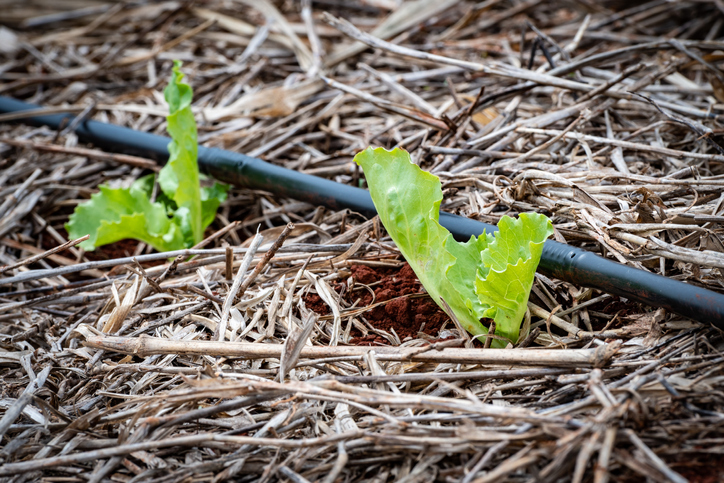During times of drought, we must learn to use water more efficiently to prevent waste of our most precious, life-sustaining resource. Therefore, it’s critical that we use efficient irrigation methods that deliver just the right amount of water to our plants— no more, no less— to keep them healthy and thriving.
Since plants draw water up through their roots, the most efficient method of irrigation will deliver water directly to the root zone, where it’s needed. Not only is this efficient irrigation, but it’s also sustainable, since some water seeping down through the soil and into the root system will percolate down into the groundwater system to be reused for irrigation in future years.
The key to keeping plants healthy and not waste water is watering just enough so they can complete the process of photosynthesis and continue to thrive during drought times.

Drip irrigation is most efficient when it comes to reducing water use, as it filters down through the soil, virtually eliminating wasteful water runoff and wind-driven spray that can result from watering above ground with sprinklers.
Efficient irrigation also means not watering in the heat of day when much water is lost through evaporation. Watering in the cooler evening hours during Summer, and in the morning during Winter (to prevent overnight root freeze) is important. But take care not to water plants during the dormant phase of their growth cycle. It not only wastes precious water, but will cause root rot.
A good checklist for efficient and sustainable irrigation in these drought times would include the following tips:
- Check your irrigation system for any leaks, and make any necessary repairs to reduce water waste by 10 percent or more.
- Use drip irrigation for direct water application around plants instead of overhead sprinklers to avoid wasting water through wind-driven spray and water runoff.
- Bury sensitive Soil Moisture Sensors deep in the soil around plants to gauge precise moisture content in the root zone and transmit readings to the Smart Controller to avoid watering when not necessary.
- Replace traditional irrigation timers with cloud-based Smart Controllers to maintain plant health with the least amount of water possible, based on real time weather data.
- Group plants by Hydrozone with the same water needs on the same irrigation line.
- Know your soil type to avoid runoff and water waste. Sandy soil requires more frequent but shorter runtimes so water can infiltrate efficiently without waste. Loam and clay soils require longer runtimes but less frequently for efficient irrigation.
- Avoid water runoff on slopes by using cycled irrigation start times (pulse irrigation) to allow water to soak in slowly.

